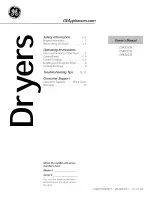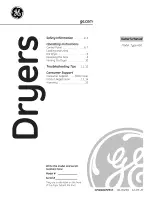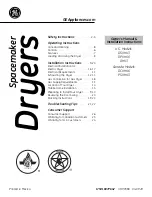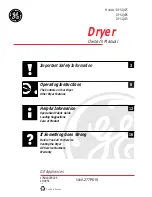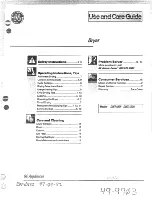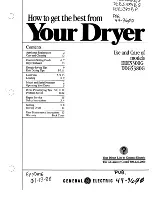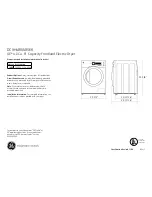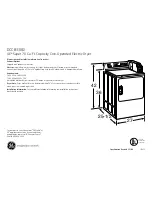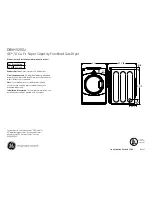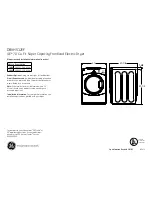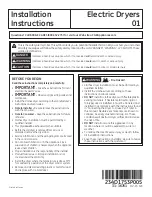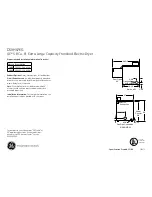
16
Rigid metal vent
■
For best drying performance, rigid metal vents are recommended.
■
Rigid metal vent is recommended to avoid crushing and kinking.
Flexible metal vent
■
Flexible metal vents are acceptable only if accessible for cleaning.
■
Flexible metal vent must be fully extended and supported when the dryer is in its final
location.
■
Remove excess flexible metal vent to avoid sagging and kinking that may result in
reduced airflow and poor performance.
■
Do not install flexible metal vent in enclosed walls, ceilings, or floors.
■
The total length of flexible metal vent should not exceed 7
3
/
4
ft (2.4 m).
Elbows
45° elbows provide better airflow than 90° elbows.
Good
Better
Clamps
■
Use clamps to seal all joints.
■
Exhaust vent must not be connected or secured with screws or other fastening devices
that extend into the interior of the duct and catch lint. Do not use duct tape.
Clamp
Exhaust
Recommended hood styles are shown here.
4"
(102 mm)
4"
(102 mm)
B
A
A. Louvered hood style
B. Box hood style
The angled hood style (shown here) is acceptable.
4"
(102 mm)
2½"
(64 mm)
■
An exhaust hood should cap the vent to keep rodents and insects from entering the home.
■
Exhaust hood must be at least 12" (305 mm) from the ground or any object that may be in
the path of the exhaust (such as flowers, rocks, or bushes, snow line, etc.).
■
Do not use an exhaust hood with a magnetic latch.
Improper ventin
g
can cause moisture and lint to collect
indoors, which may result in:
Moisture damage to woodwork, furniture, paint, wallpaper,
carpets, etc.
Housecleaning problems and health problems.































